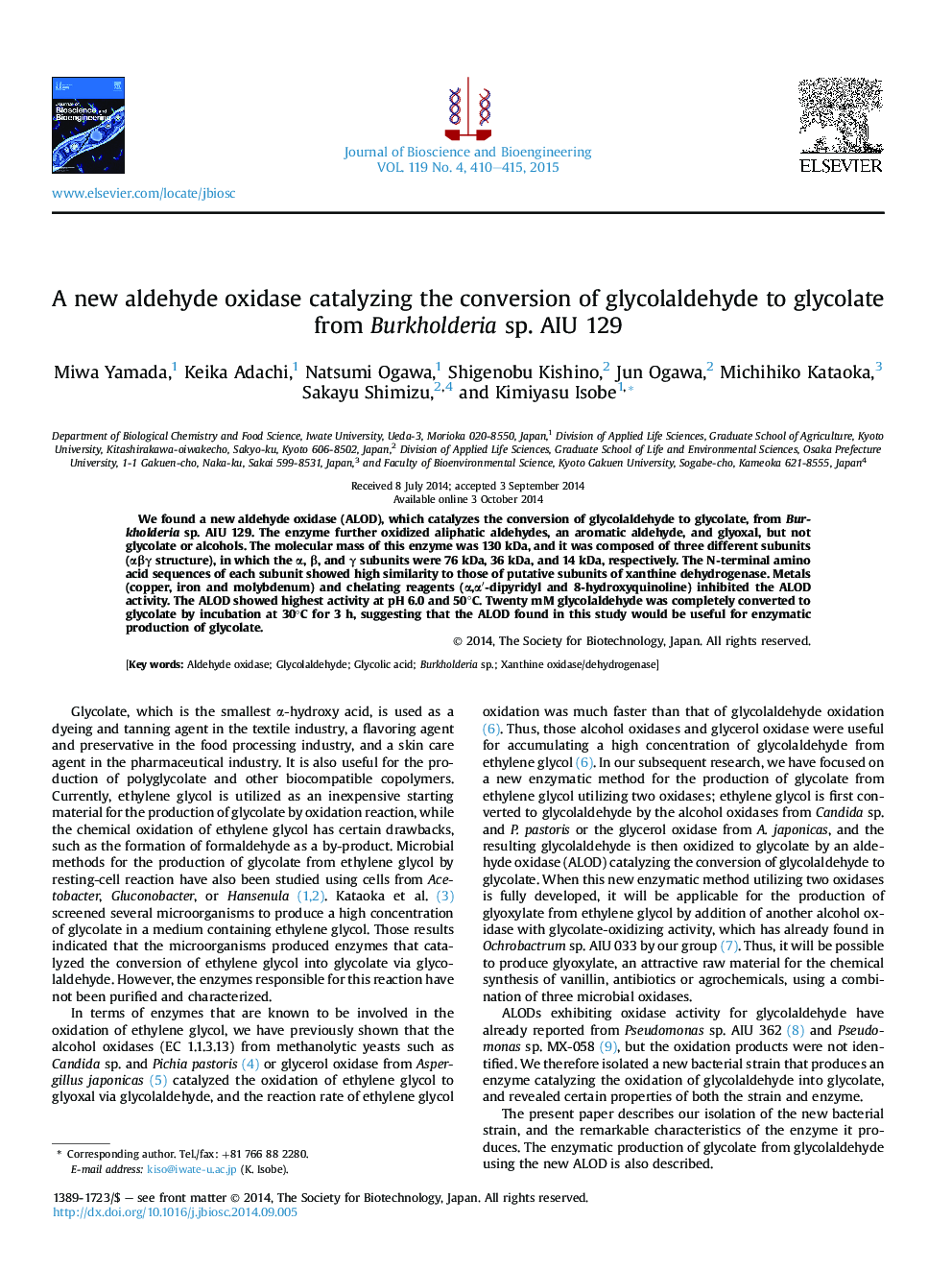| Article ID | Journal | Published Year | Pages | File Type |
|---|---|---|---|---|
| 20227 | Journal of Bioscience and Bioengineering | 2015 | 6 Pages |
We found a new aldehyde oxidase (ALOD), which catalyzes the conversion of glycolaldehyde to glycolate, from Burkholderia sp. AIU 129. The enzyme further oxidized aliphatic aldehydes, an aromatic aldehyde, and glyoxal, but not glycolate or alcohols. The molecular mass of this enzyme was 130 kDa, and it was composed of three different subunits (αβγ structure), in which the α, β, and γ subunits were 76 kDa, 36 kDa, and 14 kDa, respectively. The N-terminal amino acid sequences of each subunit showed high similarity to those of putative subunits of xanthine dehydrogenase. Metals (copper, iron and molybdenum) and chelating reagents (α,α′-dipyridyl and 8-hydroxyquinoline) inhibited the ALOD activity. The ALOD showed highest activity at pH 6.0 and 50°C. Twenty mM glycolaldehyde was completely converted to glycolate by incubation at 30°C for 3 h, suggesting that the ALOD found in this study would be useful for enzymatic production of glycolate.
